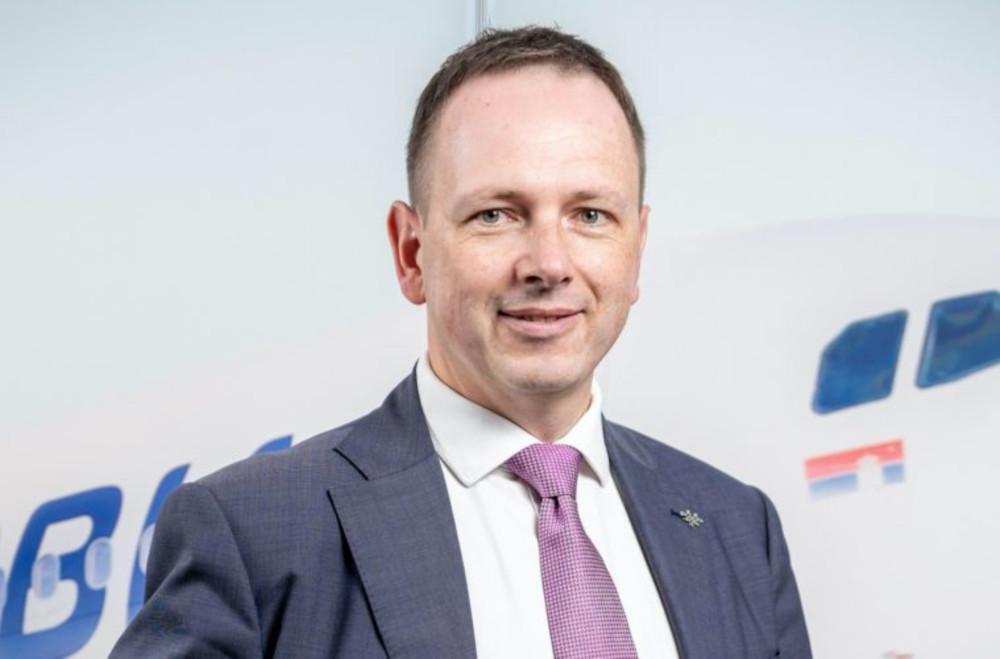
Jiri Marek, CEO of Air Serbia.
Air Serbia CEO Jiri Marek sits down with Aviation Week Network to discuss the Belgrade-based airline and its future in-house MRO facility requirements.
Can you describe the current size of Air Serbia in terms of its fleet and network?
In some benchmarks, Air Serbia is now three times larger than the former JAT Airways, which was transformed into Air Serbia 10 years ago. In 2023, we expect to carry four million passengers, which is a more than three times the result compared to JAT Airways in its last year of operation.
The number of destinations has doubled, and the fleet size almost tripled. We believe the market and the region will continue to grow. We would like to capitalize on that growth and to keep our market share. If we look toward the end of the next decade, our airline could have more than 50 aircraft. Our network is reaching a respectable spread. We currently fly to more than 80 destinations and we have ambitions to reach 100 destinations by our 100th anniversary. That is not so far away from the current 80, and it means that our main focus will now be on network densification rather than adding more destinations. Our last two years were characterized by network spread, and moving forward we will continue to spread the network, but we will go into more depth. Air Serbia currently has 22 aircraft in its fleet and continues to utilize eight aircraft on a wet-lease basis through the winter season, so as to proceed with all the base maintenance tasks due on its own fleet to be ready for the next summer season.
Has the fast growth of the industry impacted the technical supply chain?
I don’t think that it is the fast growth that has an impact on the supply chain. The supply chain was severely disrupted during the COVID-19 pandemic. Many things became visible as early as 2022, and now the problems are increasing rather than the opposite. For example, the delivery time for many spare parts was previously counted in days, but now it is weeks and—in some cases—even months. The OEMs are starting to provide airlines with lists of critical parts which grow very fast from one page to even four pages, which is the case for one of the aircraft types in our fleet. The most critical parts currently are the landing gear, blades, brakes and so on. However, we are considering these and we are planning additional spare capacity to overcome these issues.
Do you have plans for Air Serbia to have its own MRO facility?
Once our fleet reaches the size of 30+ aircraft, that is the time when you need to look into the options to have your hangar facility at your base. At the moment, we are doing our base maintenance tasks across multiple facilities throughout Europe. As was already mentioned by Turkish Technics, we are having a discussion with them on a potential joint venture and the development of such an option at our home base. However, it is not the only option, and we are exploring other possible solutions. These things do not happen overnight—they require time, negotiations and investment.
How do you handle your MRO arrangements now?
At the moment, all base maintenance is outsourced. During the spring period, we used predominantly Turkish Technics in Istanbul. During the winter season, we are using the Atitech facility in Naples, Italy. For our ATRs, we use maintenance by Aero Technic BG in Sofia, Bulgaria. We are completely changing our current approach and we are booking maintenance slots for the next three to four years, instead of relying on slot availability from season to season. In the past, we have been using JAT Tehnika next-door here in Belgrade. But they are booked up way forward, and without securing slots we cannot rely on resource availability. Last winter season we had a lot of delays caused by JAT Tehnika. However, we are continuing our discussion and finding synergies for how we can also establish a strategic partnership—which would be logical, having close cooperation with a provider at your base.
Air Serbia also operates a fleet of Airbus A319/A320ceo aircraft. Many airlines have challenges with their A320neo fleets. When do you think a fleet replacement is necessary?
It is not urgent for us for two reasons. With the existing size, we still can capitalize on the current volatile market and continue to target secondary, mid-aged, mature aircraft until we reach a size of between 35 and 40 aircraft. When we reach that size, it starts to become critical to establish long-term fleet plans, including possible new orders from manufacturers, which will naturally mean evolving to new technology. In a way, we are lucky not to have the new technology yet—like the A320neo, for example—due to growing problems with the engine.
We believe that by the time we are ready for new orders, the technology will have matured and all the problems will be resolved. If you have a fleet of 200 or 300 aircraft, then you have many options for overcoming such challenges when part of the fleet is grounded due to engine issues. However, for an airline of a smaller size, when you forcibly ground, for example, 40% of the aircraft with engine issues, it can be very hard to overcome. From that viewpoint, Air Serbia will continue to use current technology until the problems with the new technology are resolved.





